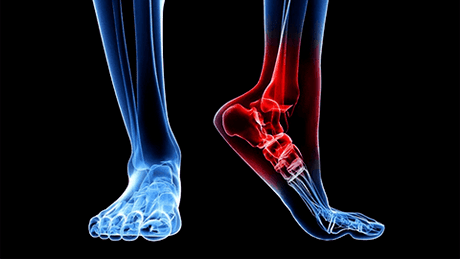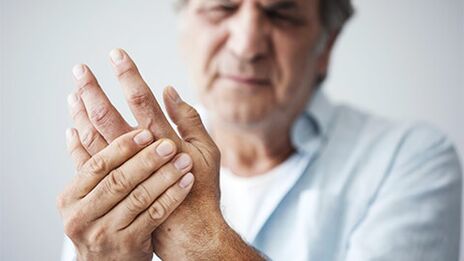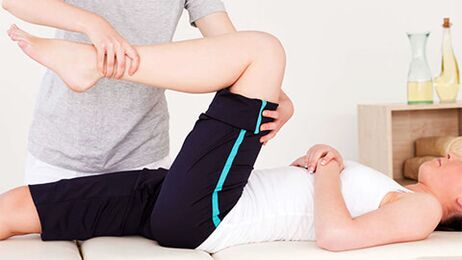
Arthritis is a group of deep diseases of the joints with different causes, but is a similar clinical picture of pathological changes.Hyaline cartilage of joints, then drunk bone tissue, joint capsules and ligaments, are exposed to destruction and deformation.The disease is chronic progression and no appropriate treatment can significantly limit the patient's motor activity.
Diagnosis and treatment of pathology are participating in a scientist, rheumatoid doctor, surgeon, orthopedic expert.
General information
Arthrosis is diagnosed with about one fifth of the planet's population, but the disease is more typical of the elderly.This proves the statistics of its spread at different ages:
- Young people up to 40 years-not more than 6-7 %;
- Mature face after 45 years up to 20-25%;
- After 70 years - up to 80%.
The disease affects the tissue below a constant load: the small joints of the hands and the plus of the legs, hip and knee joints, the area in the cervix and chest of the spine, less often in the ankle and shoulder joint.
Note! The failure of the continuous joints of the hand in women occurs more often 10 times more than men.
In many Western countries, the term arthritis is not used, replacing it with the concept of arthritis.Such a replacement is quite reasonable, because the inflammatory processes in most cases go to Arthrosis or come with it.In domestic medicine, the terms of arthritis and arthritis basically mean the same disease, but with the different causes of the process.In addition, the concepts of osteoarthritis, osteoarthritis, and osteoarthritis diseases are used to indicate pathology.
Note! The difference between arthritis and joints lies in the cause of the disease.In the first case, these are inflammatory processes (dumbbells and inflammation), in the second -metabolic treatment disorders (protein, minerals).
Mechanism of development and causes of arthritis
The main cause of arthritis is to violate the equilibrium state in the assimilation and catabolic processes of cartilage and bone tissue.If the synthesis process dominates normally, then in the process of changing Arthrose, the destruction process will be faster.As a result, the rapid and degenerative aging of tissue structures is observed.They started to collapse first at the cell level, then at the organ.The first vandal changes appear:
- cartilage cloud;
- Superficial storage;
- Vicrocracks and tears;
- The focus and general thinness of the cartilage layer.
Cartilage loss of elasticity and natural density and can no longer serve as a shock absorbent in movements.The mutual correspondence of the shape of the joint surfaces is disturbed, leading to the deformation of the connection.This worsens the development of pathological changes and activates some irreversible processes.In exchange for lost cartilage, bone tissue begins to develop with the formation of spines and development, which the movements of Fetter and then can lead to serious disability of the patient.
The reason for this script:
- Violation of mineral metabolism can lead to changes in gout in joints, osteoporosis, etc.
- The disadvantage of tissue nutrition is that the intravenous and microcontroller stagnation slows down the source of blood and lymphatic drainage.The mineral component of the bone is exhausted, it becomes osteoporosis and loss of self -made ability.This phenomenon is characteristic of the lack of movement, with vascular diseases, hormonal incidents.
- Inflammation processes - Consequences of acute infectious diseases, lower body heat, hormonal impairment.
- The autoimmune reaction is the chronic relationships of inflammation, nervous tension, endocrine diseases and other causes that can cause the aggression of the body's immune system to its own cells, including joint tissues.The most common autoimmune lesions with rheumatoid arthritis, sclerosis and red lupus.
- Increase joint wear - a inappropriate function and loading load slow down the synthesis process and accelerate destruction.This phenomenon is the characteristic of athletes, dancers, overweight people, as well as for all those who are participating in heavy physical labor or related to the long load (standing job).
- Trauma - Bruises, dislocated, fractures, invading wounds, tears - violating the structure of tissues and motivates the beginning of deformation.
- The pathogenesis of genetics - connective tissue dysplasia, the initial collagen synthesis violations form an unstable and unstable joint.
Some reasons are repeating and forming a complex pathological complex.
Attention! The hormonal deviation plays a particularly important role in violating bone tissue metabolism.A failure in the thyroid gland, menopausal, contraceptive, corticosteroids - all this is a direct path to change bones and arthrose in the skeleton.
Classification of changes
In the system of muscle disease, some determined criteria are used: Causes and causes, localization, insurance areas.
For reasons:
- Nguyen Phat arthritis - developing independently, with damage to completely healthy joints, without the participation of previous diseases;
- Secondary people are formed on the basis of a disease (gout, psoriasis, rheumatism), as well as with the presence of existing deformations or injuries.
According to the level of insurance:
- Local forms-with limited damage of some joints: single-1-1, oligarthis-2-3;
- The general forms are many different types of polyarthrosis, when 3 large structures and more are related to the pathological process.
According to the localization of the process, the name of the joint disease of each joint is given separately:
- Coksartrosis - disabling hips connection;
- Spondylarthrosis - affecting the intervertebral disc, mainly cervical, chest and waist;
- Gonarthrosis - With the weak work of the knee joint;One of the most common species;
- Cruzartrosis - With the participation in the pathological process of ankle.
Arthrosis may be quickly or slow to progress, compensated or offset.
The main symptoms and signs
Arthrosis is a complex disease.Usually, it can be divided into some of the most suitable diseases:
- Chondrosis and Chondrosis - Inflammation and degeneration of cartilage tissue;
- Osteoporosis is also osteoporosis - a pathological process in bone structure;
- Animal inflammation - the participation of the shell of the joint capsule;
- Bursit - Common inflammation of the common bag;
- Reaction damage to soft tissues in adjacent areas - affect muscles, ligaments, fibers.

Depending on the stage, degree and shape, they are observed simultaneously or selectively.With this thought, a complexity of symptom changes formed.Among them:
- Pokhrutzhazing is a symptom of violations of mineral metabolism and the first sign of the disease.It can occur at any age.
- Stocks - strong manifestations in the morning.It is short -term and can be expressed by the effect of joint interference.
- Limiting mobility - Reducing the amplitude of movements in performing operational or passive actions.
- Pain-a different manifestation, starting from discomfort and pain, after a strong load, has a background characteristic and ends with acute sharp movements.The Viking's starting pain has been specially special, manifested after a long time of rest and prolonged until the joint is completely developed.
- Swelling - With inflammation of soft tissue, epidemic inflammation, Burs inflammation.
- Deformation - observed with the complete degeneration of cartilage and lack of shocking factors.
Note! The notes of Bushara and Geberden are a typical sign of the hand deformation of the hand.They are bone growth with the processes of bone cells.
Stage and level of arthritis
Regarding the intensity of changing arthrose, 4 stages of the disease are distinguished:
- Stage 1 - with small cartilage (violating structure and function in collagen fibers).In X -Ray, the reality image is not visible.
- Stage 2 - Cartilage stinging in the joints up to 50%.It is covered with cracks, a mild pain that appears in the area of the compound damaged.Bone complexes appear on x -ray;The general distance reduces its size.
- Stage 3 - The damage of cartilage almost reaches the bone base, the joint distance decreases sharply.
- 4 Stage - Cartilage is completely damaged, leading to partial or complete degeneration of the interior fluid, abrasion of the bone tissue and deformation of the compound.In some areas, changes in hardened sclerosis.Extremely manifestations of muscle disease are the consolidation of tissues that match the fossils of the structures and completely lose the ability to move.
In some sources, phases 1 and 2 are combined into one.
With the advancement of symptoms, the movement activities of a person affected.Due to violations of the function of joints, 4 degrees of pathological development can be distinguished:
- 0 degrees - Mobile and performance are fully preserved;
- 1 degrees - Patients retain their ability to self -service and manifest social activities, but cannot participate in labor activities;
- 2 degrees - Difficulties in the manifestations of social activities are added to violations of labor activities;
- 3 levels - All types of activities are limited or completely impossible: labor, social and self -service;Patients need to be cared for continuously.
What are the possible complications
By tightening with treatment, you can cause some uncomfortable consequences:
- Continuous pain syndrome;
- disturbance;
- Animals with backbone (with spinal disease);
- Deforming joints;
- Complete motionless with fossils of structures.
Survey procedures include what
To diagnose muscle disease, a medical examination with the collection of Anamnesis is sufficient.To determine the level of damage, a tool test is done.The main ways to get a clear picture of the disease:
- X -ray;
- CT, MRI;
- Supersonic;
- radiotherapy;
- Joint endoscopy diagnosed with cartilage tissue biopsy and fluid fluid.
In a process of acute inflammation, the doctor prescribes additional analysis: General blood test, rheumatism, biochemical (level of glucose, protein compound, electrolyte).
Treatment
Can not completely eliminate disease.Timely treatment of muscle disease allows you to maintain joint function, normal exercise and prevent pain.To eliminate complications, it should start at the first stage.
Drug therapy Include:
- Anti -inflammatory drugs, mainly NSAID;
- The inner steroid blocks of pain and inflammation (with obvious inflammation of the epidemic, Burs inflammation);
- Protein inhibitors - slow down and suspend the process of destroying bones and cartilage;
- Antispasmodics - Prevent muscle cramps;
- Angioprotector and drugs to improve microcirculation in affected tissues;
- chondroprotector;
- Synthetic substitutes for synovial fluid;
- Vitamin and minerals ingredients.

A physiotherapy complex Parallel regulations to enhance the effects of the drug.Main physiotherapy:
- Magnetic therapy;
- electricity;
- Uhf;
- mud;
- bathroom;
- massage;
- Exercise and Kinesiology by using special simulation processes.
Surgery - The only way to treat in the following stages, when cartilage tissue is completely destroyed.The following solutions for the problem are possible:
- Endoscopy - with partial or complete replacement of joints with an artificial substance;
- Joint endoscopy - a minimal invasive activity to remove bone cells or replace partial cartilage;
- Arthritis - closing and repairing it in the most convenient position;The joint surfaces are connected to the immobile development over time.
Forecast
Arthritis does not threaten the life of the patient, but the lack of treatment may significantly limit the freedom to move and worsen the quality of life.Timely and capable therapy in the early stages can restore joints to a healthy state.In other cases, it is only possible to slow down the degenerative process with the help of conservation treatment and compensation for the loss of functions due to prosthetic legs.
Prevention of disease
A complete recovery is almost impossible, so the prevention should be paid for special attention.The main requirement is a healthy lifestyle and fully treated inflammatory processes:
- Do not allow heat lowering and treating infectious diseases in a timely manner;
- Avoid physical overload and long stinging load;
- maintain normal body weight;
- Following the appropriate diet-the equilibrium of vitamins and minerals is very important for the health of the musculoskeletal system;
- Completely (if possible, until completely recovered), handle any damage to the joints;
- Practice systematic physical exercises to stimulate blood circulation (bicycle, hiking, light jogging, scandinavia walking).
If you are at risk (old age, poor genetics, physical overload), make sure to undergo a regular X -ray test.
























